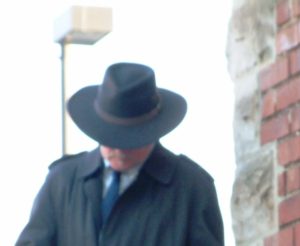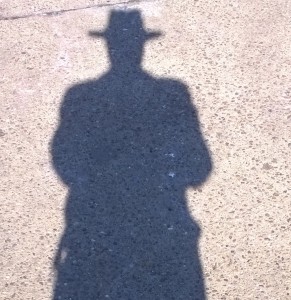Ngo Dinh Diem was elected president of South Vietnam because of his vision for growing the country’s economy and protecting its population. With the United States’ financial assistance, Diem industrialized several regions within the country. He came from one of the elite families of Indochina, he was educated in British Malaya, and, before going into politics, he considered going into the priesthood. His presidency was greatly influenced by his strong religious beliefs. Initially, his social reform was structured around Catholic and Confucian beliefs, such as closing brothels and opium dens, some of which ran contrary to long-practiced standards. He made divorce and abortion illegal. With this growth came the establishment of respectable universities within South Vietnam. He also promised land reform, since much of the country’s property was held by a small minority, predominately Catholic families. Moreover, the Catholic Church was the largest landowner in South Vietnam.
There was a dark side to what appeared to be positive developments. While implementing his plans for social and economic change, he was also consolidating his power against the other warlords and their families throughout South Vietnam. By 1960, the Diem Presidency and his political party, Can Lao, were on shaky ground due to his provocation of the predominately Buddhist population. Diem selected mostly Catholics to political appointments. Even in the military, Catholics climbed the promotion ladder faster than Buddhist officers. President Diem also jailed approximately 40,000 political prisoners. Additionally, his special police force, run by his ruthless brother Nhu, killed an estimated 12,000 opponents to his policies. 
The 1961 inauguration of United States President John F. Kennedy brought a fresh set of eyes to Southeast Asia in general and Vietnam in particular. President Eisenhower had been willing to fight communist advances at every single doorstep. Kennedy defeated Eisenhower’s Vice President Richard Nixon by running on a change in policy with more emphasis on economic growth at home along with more social reform.
Kennedy was a young, inexperienced politician who brought a considerable number of fresh faces into his administration. Kennedy felt compelled to move forward with several foreign operations, since they were already developed so far he had no choice. One of the those was the Bay of Pigs, which failed miserably due in part to his Secretary of Defense Robert McNamara’s last-minute decision. But that development caused Kennedy to quickly stop and review many of Eisenhower’s programs—specifically, the US involvement in South Vietnam and the CIA. Kennedy removed Allen Dulles as head of the CIA and appointed John McCone, an industrialist with no government experience. However, in a surprising move, he appointed Edward Lansdale, who had run OPERATION MONGOOSE, the Cuban debacle, to a special position in the Department of Defense to assist with South Vietnam. Why, you ask? Because Lansdale had spent time in Vietnam in the 1950s and was very close to President Diem. Kennedy needed insight and experience. He had begun to wonder about the stability of the Diem Presidency and the military role the United States served in that country. Kennedy was under pressure from all sides to make something positive come from situations that had only negative options. First, the military wanted to increase its role in South Vietnam, yet retired General Douglas MacArthur told Kennedy that Vietnam was no place for ground troops. Next, Kennedy had concerns about Diem but was unable to come up with a suitable replacement who would be willing to work with the United States. And third, there was political pressure for the Free World to confront the Communist World at every opportunity. Kennedy, a Democrat, did not want to be lumped in with Democratic President Harry Truman, who was perceived to have mishandled the Korean War. Kennedy believed there had to be a resolution for South Vietnam or it would be used against him in the 1964 re-election campaign.
Just after Kennedy was elected, an attempted military coup on Diem failed. On December 20, 1960, the North Vietnamese government, lead by Ho Chi Minh and Le Duan, saw these internal divisions within South Vietnam, coupled with the military coup, as a sign of weakness. They formed the National Liberation Front (NLF), or, more commonly called the Viet Cong.
President Diem attempted to counter the renewed Viet Cong activity with another program called the Strategic Hamlet Program, which was designed to move individuals from smaller, unprotected villages into newly constructed “hamlets” complete with housing, schools, wells, and a watchtower. Additionally, the US supplied weapons, via the South Vietnamese Army, to the people in the hamlets to aid in their protection. The program was designed to protect the population from harassment by the Viet Cong. Yet, many of the villagers resented being moved from their homes, including some who had occupied their land for many years. Moreover, many of the displaced citizens were farmers, not fighters, so they allowed the US weapons to fall into the hands of the Viet Cong. The irony of moving the population around was that 75% of the land was still owned by 15% of the population, mostly Catholics.
As unrest grew among the population, Diem started cracking down on the Buddhist Monks, whom he believed had turned political and were keeping the population upset. This served only to make Diem even more unpopular. In February 1962, there was another military coup when the Air Force bombed the Presidential Palace. Again, they failed.
This is where my novel series begins. My series will cover many of the events of the recent Vietnam Documentary presented by Ken Burns and Lynn Novick. However, my novels also deal with key elements of the Vietnam Conflict that were not addressed within this well-done documentary, such as the role of the CIA and illicit drugs.
I want to show my readers the real history behind the Vietnam Conflict, not just what we were taught in school.
Do you have any special insights into what really happened? If so, please drop me an email or leave a comment. I would love to chat with you.


